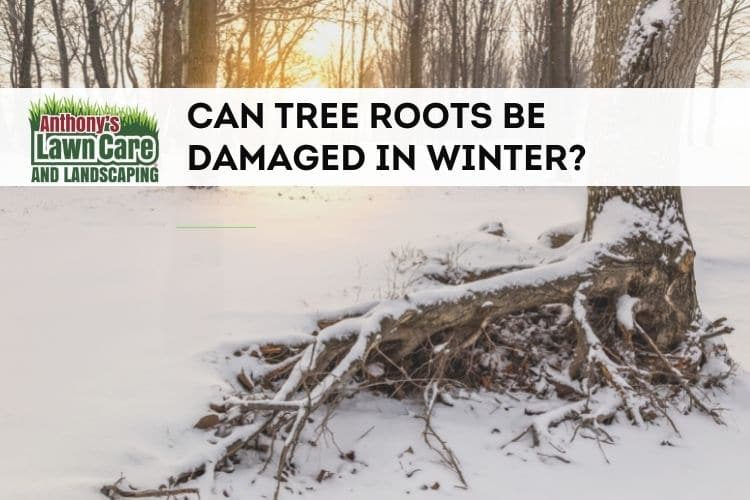Trees are adapted to the outdoors, so you may not expect them to be susceptible to temperature fluctuations much. But root tissues can be damaged by below freezing temperatures, especially if exposed for extended periods. There are a few things you can do to protect your trees from root damage though.
1. Never “volcano mulch”: The term volcano mulching refers to when homeowners or inexperienced landscapers pile mulch up around the base of a tree, so it makes a hill with the tree trunk emerging from the middle like a volcano.
This creates many problems, one of which is the roots migrate into the mulch hill. This will bring them out from the more stable temperatures below ground and into the colder, exposed air. These above-ground roots are certainly at greater risk of being affected by extreme temperatures.
2. Mulch properly: If poor mulching can cause problems, you may not be surprised to learn that proper mulching will help tree roots, even if for very different reasons. Mulch should be spread the full width of the tree’s “drip zone.” This means that if the tree branches reach out 10 feet away from the trunk, the mulch should too, because this is about the spread of the roots underground.
While thicker mulch will provide more insulation for the roots, do not feel the need to overdo it. Too much mulch can invite pests, like insects and rodents, that will attack the tree. Mold and mildew will also be more likely to develop with too much mulch, especially if you don’t leave a few inches between the tree trunk and the start of the mulch. This hole in the middle where no mulch is present is why the proper technique is often called “donut mulching.”
3. Consider leaving the leaves: If you don’t put much effort into mulching trees, you should at least leave the leaves in the fall. This “leaf litter” is great insulation that prevents roots from being too exposed to the cold. You don’t have to leave the entire yard unraked and looking like a mess either. If you put a boundary, maybe of stone or brick, around the perimeter of the drip zone, you can rake everything outside that perimeter and still have a well-groomed yard.
4. Give shallow-rooted plants more attention: Unsurprisingly, plants that have thick, deep roots are not as at risk as ones that have shallow roots. For this reason, you should be strategic about when you plant new trees and shrubs. Planting a tree with slow-growing roots in the fall may not be wise, because it will likely not be ready if the winter turns out to be harsh, which it often does in Indiana.
There are also ways you can water and care for a tree before the winter that are more likely to encourage strong root growth. If a tree with shallow, weak roots is already planted and you’re experiencing a cold winter, extra steps should be taken to protect the roots. Pile up a bit more mulch than you would have, still avoiding putting any against the tree’s trunk. Snow can actually also act as a good insulator, so even in the coldest winter, a constant blanket of snow may save your weaker trees.
Call Anthony’s with any questions on how to protect your trees
If you aren’t quite sure how to protect your trees and their roots in a particularly cold winter in the Bloomington, Indiana, area, Anthony’s can help. Give us a call at (812) 345-5694 and we can discuss some strategies.


Recent Comments